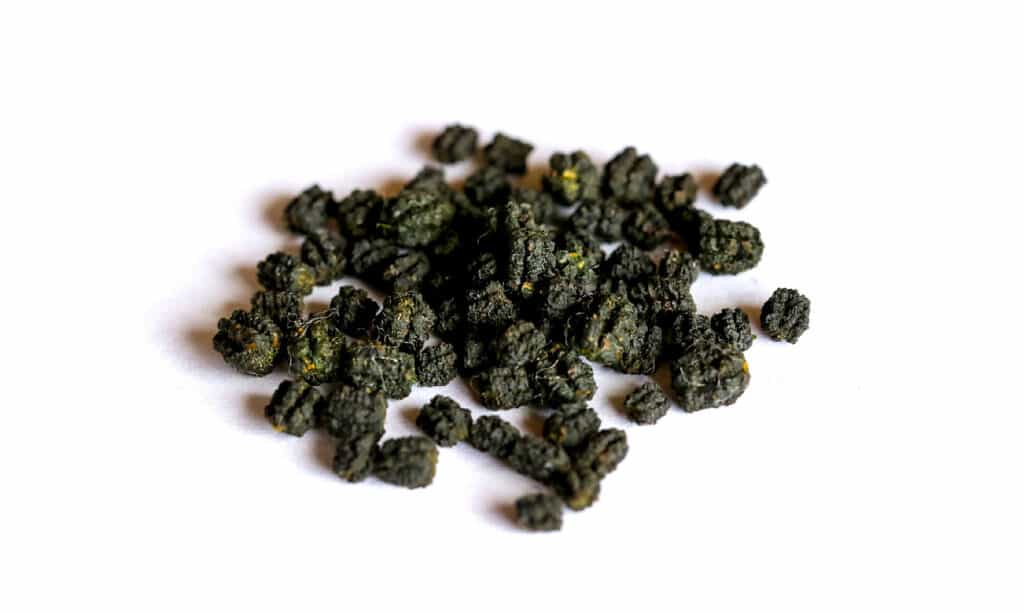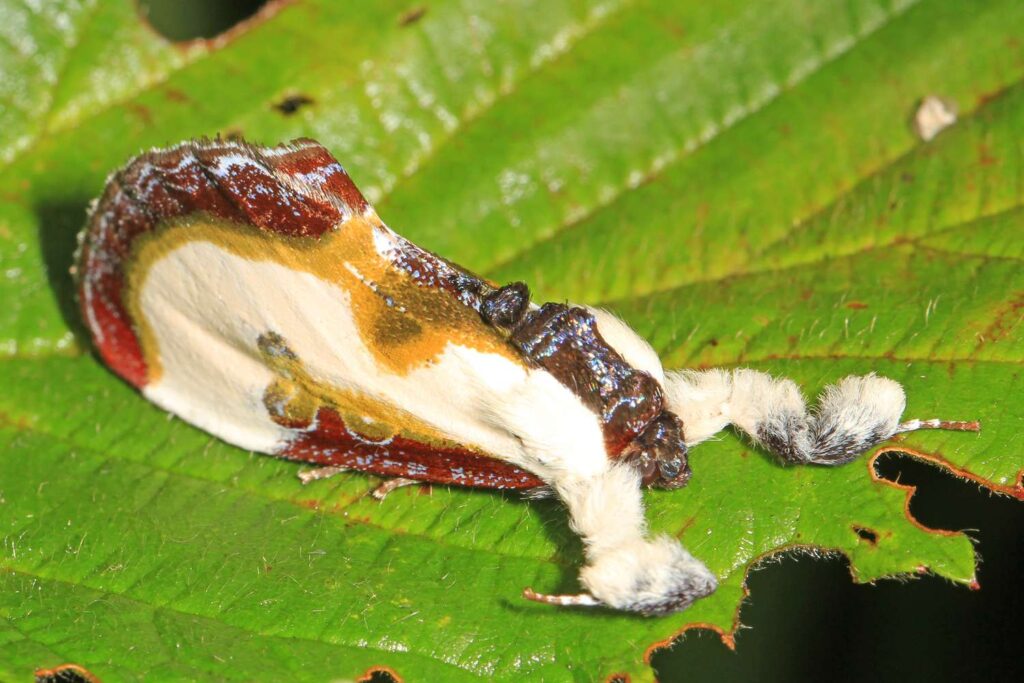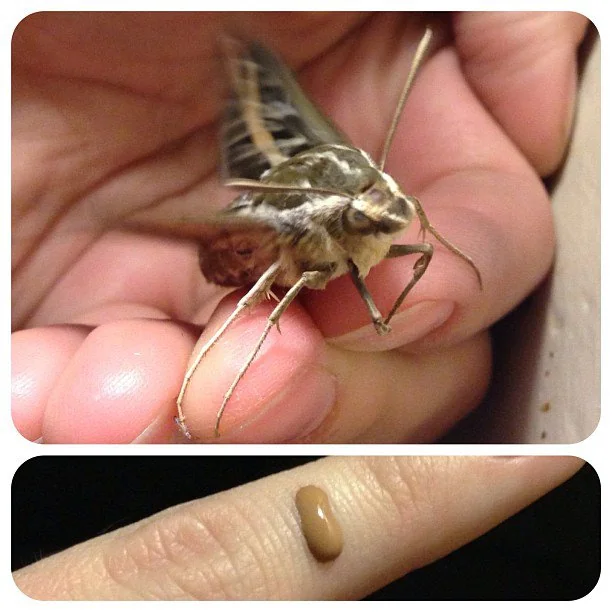Yes, moths, like many other living organisms, do produce waste in the form of excrement. Moth excrement is commonly referred to as “frass.” Frass is typically composed of undigested food particles and other waste materials expelled from the moth’s digestive system.
Moths, like other insects, have a digestive system that processes the food they consume, extracting nutrients for energy and growth while eliminating waste in the form of frass. This frass can vary in appearance depending on the species and diet of the moth but is essentially moth poop.
What is the moth’s digestive system like?
The digestive system of a moth, like that of most insects, is a tube-like structure consisting of several distinct parts.
| Component | Description |
| Mouthparts | Specialized mouthparts: proboscises for nectar-feeding, mandibles for chewing solid food, etc. |
| Foregut | Initial digestion site where food encounters enzymes and undergoes the first stages of digestion. |
| Midgut | Primary digestion and nutrient absorption site containing digestive enzymes for nutrient breakdown. |
| Hindgut | Responsible for absorbing water and minerals from undigested material before excretion. |
| Malpighian Tubules | Kidney-like organs removing waste and excess substances from the insect’s hemolymph (insect blood). |
Comparison to other insects:

Moths belong to the order Lepidoptera, and their digestive system shares similarities with other insects in this order.
However, the specifics of the digestive system can vary among different insect orders and even within species based on their diet and ecological niche.
For instance, herbivorous insects like caterpillars (the larval stage of moths) have adaptations for breaking down plant material, while predatory insects may have different adaptations for digesting prey.
In contrast, some insects, like ants, exhibit social behaviors where they share food and can have specialized castes with different digestive functions, which differs significantly from the solitary nature of most moths.
How does frass vary among different moth species?
Frass is the term used to describe the waste material excreted by moths and other insects after they have digested their food.
It consists of undigested or indigestible components of their diet, such as plant fibers or other material that could not be broken down for nutrients.
Composition of frass:
The composition of frass can vary depending on the diet of the moth. For herbivorous moths, it may contain plant fragments, cellulose, and compounds specific to the host plants.
In the case of predatory moths, frass may contain remnants of prey, such as insect parts.
It also contains metabolic waste products, including nitrogenous compounds like uric acid.
Appearance and characteristics of frass:
Frass typically looks like small, dry pellets or granules, often similar in appearance to sawdust. In addition, its color and texture can vary depending on the diet and moisture content.
Variability in frass among moth species:
Different moth species may produce frass with distinct characteristics, making it possible to identify the source of frass based on its appearance and composition.
Furthermore, this variability in frass can have ecological implications, as it may influence the decomposition of organic matter and nutrient cycling in ecosystems.
What is the ecological significance of moth frass?
Moth frass, often overlooked in the natural world, plays a vital ecological role, contributing to nutrient cycling and ecosystem balance in unexpected ways.
Frass plays several crucial roles in the environment:
Nutrient Recycling: Frass contains undigested plant materials and waste products, including nitrogenous compounds like uric acid. When moths deposit frass in their environment, these nutrients are returned to the ecosystem.
This recycling of nutrients is essential for maintaining soil fertility and supporting plant growth.
Microbial Activity: Frass can serve as a substrate for various microorganisms, including bacteria and fungi.
These microorganisms break down the organic matter in frass, further contributing to nutrient cycling. In this way, frass can act as a source of energy for decomposers.
Plant Growth: Some plant species have coevolved with moths and have developed mutualistic relationships with them.
For example, the frass of certain moths may contain nutrients that promote the growth of specific host plants. This can benefit both the moths and the plants.
Potential ecological significance:
Frass can have significant ecological implications within an ecosystem:
Herbivore-Plant Interactions: The deposition of frass on plants can influence the plants’ health and susceptibility to herbivory. Some plants may have mechanisms to deter herbivores like moths, and the presence of frass may signal the presence of potential herbivores to other organisms in the ecosystem.
Predator-Prey Dynamics: The frass of predatory moths may contain remnants of their prey. This can influence the populations and behaviors of both predators and prey in the ecosystem. It may also serve as a cue for other predators to locate potential food sources.
Diversity of Decomposers: Frass contributes to the availability of organic matter for decomposers. The types of microorganisms and invertebrates that feed on frass can affect the overall biodiversity and functioning of an ecosystem.
Connection to nutrient cycling:
Nutrient cycling is a fundamental process in ecosystems, and frass plays a critical role in this cycle:
Nitrogen Cycling: Nitrogen is a key nutrient, and the nitrogenous compounds in frass, such as uric acid, can be converted into forms that plants can take up and use.
This is particularly important in nitrogen-poor ecosystems where frass can enhance plant growth and productivity.
Carbon Cycling: Frass contains carbon-rich plant materials. When these materials are broken down by microorganisms, they release carbon dioxide into the atmosphere.
This contributes to the global carbon cycle and can have implications for climate change.
Soil Fertility: Frass contributes to soil fertility by enriching the soil with nutrients. This can have long-term effects on the health of ecosystems, influencing plant communities and the animals that depend on them.
How does a moth’s diet influence the composition of its frass?
The diet of moths has a significant impact on the composition of their frass. Here’s how different diets can influence frass composition:
Herbivorous Moths: Moths that primarily feed on plant material, such as leaves or nectar, produce frass that contains plant fragments, cellulose, and compounds specific to their host plants. The composition of frass can vary depending on the type of plants consumed. For example:
Monophagous Moths: These moths feed on a single plant species or closely related species. Their frass often contains a high proportion of plant material from their preferred host plant.
Polyphagous Moths: Moths that feed on a variety of plants may have frass with a more diverse composition. Their frass can contain a mix of plant materials from different host plants.
Predatory Moths: Moths that prey on other insects or larvae typically produce frass that contains remnants of their prey.
The composition of frass in predatory moths is influenced by the types of insects they consume and can vary based on their hunting habits.
Nectar-Feeding Moths: Moths that feed on nectar produce frass that is often less conspicuous and may contain fewer plant materials.
Their frass is more likely to consist of metabolic waste products resulting from the digestion of nectar.
Examples of different diets and their impact on frass:
| Moth Group | Dietary Characteristics | Frass Composition |
| Leaf-Eating Caterpillars (Herbivorous) | Feed on plant leaves; frass rich in leaf material, chlorophyll, cellulose | Reflects specific plant species they consume. |
| Fruit-Eating Caterpillars (Herbivorous) | Consume fruits; frass may contain fruit pulp, seeds, fruit-specific residues | Reflects the fruits they feed on. |
| Owlet Moths (Noctuidae) | Varied diets, wide range of plants; frass a mixture of plant materials from various hosts | Challenging to identify a diet based on frass. |
| Hawk Moths (Sphingidae) | Some nectar-feeders; frass may contain metabolic waste from nectar digestion | Less likely to have conspicuous plant fragments. |
| Tiger Moths (Arctiidae) | Diet varies; some eat plants, others are predatory; frass composition varies | Depends on specific feeding habits. |
| Silkworms (Bombycidae) | Exclusive mulberry leaf diet; frass primarily digested mulberry leaf material | Consists mainly of mulberry leaf remnants. |
How has frass been historically used by humans?

Historically, frass has had a few notable uses, although these have become less common with advances in technology and the availability of alternative materials:
Dye and Ink: In ancient civilizations, frass from certain insects, such as cochineal insects (not moths but related), was used to create natural dyes and inks. The red pigment extracted from cochineal insects, for example, was highly prized and used in textiles and manuscript illumination.
Medicine: In some traditional medicinal practices, particularly in Chinese medicine, insect-derived substances, including frass, were used as ingredients in herbal remedies. The belief was that these substances had medicinal properties.
Agriculture: In traditional agriculture, frass from herbivorous insects was sometimes used as a natural fertilizer. The nutrient-rich composition of frass, especially the nitrogen content, could benefit crop growth when added to soil.
Contemporary applications (if applicable):
While the historical uses of frass have diminished, there are some contemporary applications that involve insect frass:
Insect Frass as Organic Fertilizer: In recent years, there has been a resurgence of interest in using insect frass as an organic fertilizer. Some companies and researchers have explored the potential benefits of using frass from insects like black soldier flies or mealworms to improve soil health and promote sustainable agriculture. Frass is rich in nutrients and can contribute to soil fertility.
Research and Education: Frass can be a valuable resource in scientific research and education. It is often used in entomology and ecology studies to observe the feeding habits and behaviors of insects.
In educational settings, frass can be used to engage students in hands-on learning about insect ecology and biology.
Art and Craft: In some artistic and craft applications, particularly those focused on sustainable and natural materials, insect frass has been used as an unconventional artistic medium. Artists have incorporated frass into sculptures and other creative projects.
FAQ’s
Why is moth poop red?
Moth poop can be various colors, depending on their diet. It may not necessarily be red.
Do moths excrete?
Yes, moths, like all living organisms, excrete waste in the form of frass.
Do clothes moths leave droppings?
Yes, clothes moths can leave droppings, which may be found near their feeding and breeding areas.
Do moths pee red?
Moths do not typically urinate in the way humans do, and their frass may not be red unless their diet includes red-colored foods.
What color is bug poop?
The color of bug poop can vary widely depending on the species, diet, and other factors. It is not consistent across all insects.
How do you clean moth poop?
To clean moth poop, gently scrape or brush off any dry frass and then clean the affected area with a mild detergent and water solution.
Are clothes moths killed by washing?
Yes, washing infested clothing in hot water and drying them on high heat can help kill clothes moth larvae and eggs, effectively eliminating the infestation.
Final Words
In conclusion, the exploration of moth poop, scientifically known as frass, reveals a fascinating aspect of insect biology with far-reaching ecological implications. Moths, like many other organisms, play a critical role in nutrient cycling within ecosystems through the production of frass.
The composition of frass is intricately linked to the diet of moths, which can range from herbivory to predation, resulting in diverse frass compositions that impact their surroundings.
This biological waste product has historically found utility in various human contexts, including as a source of dyes, fertilizers, and even medicinal ingredients in traditional practices.
While some of these historical uses have waned, contemporary applications, particularly in sustainable agriculture, research, and education, are emerging, hinting at the potential importance of frass in addressing modern environmental and agricultural challenges.

